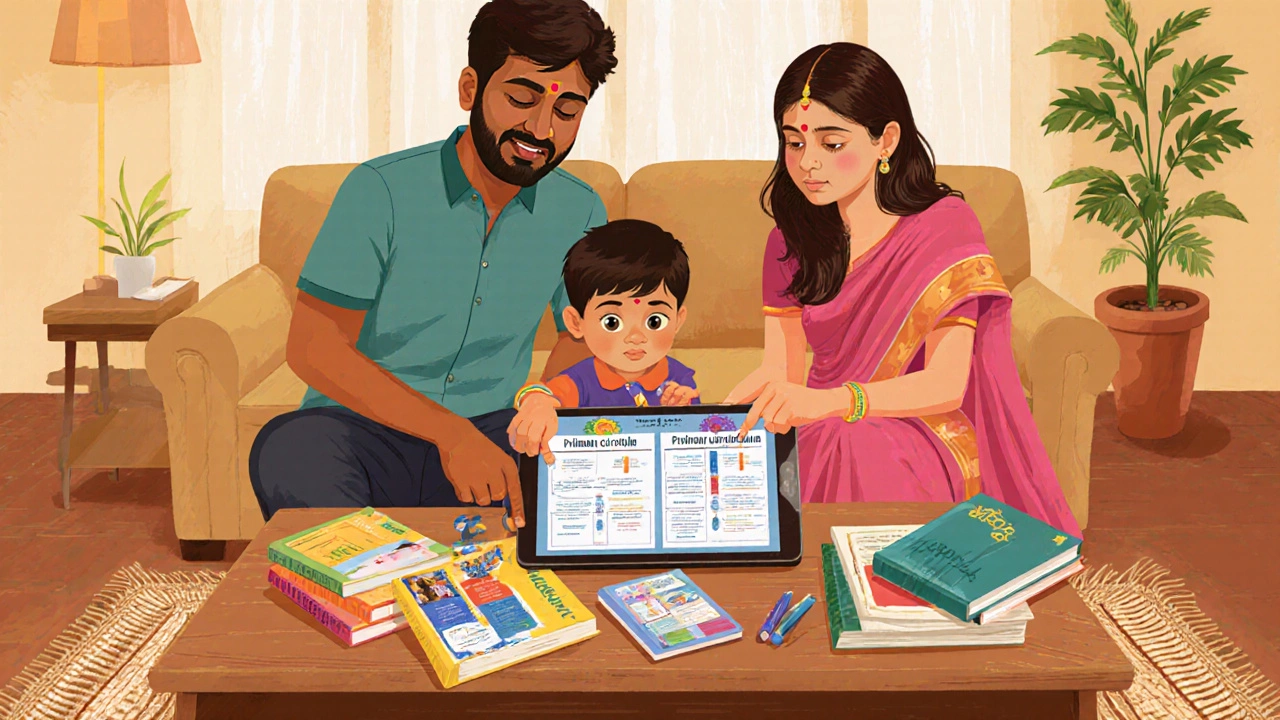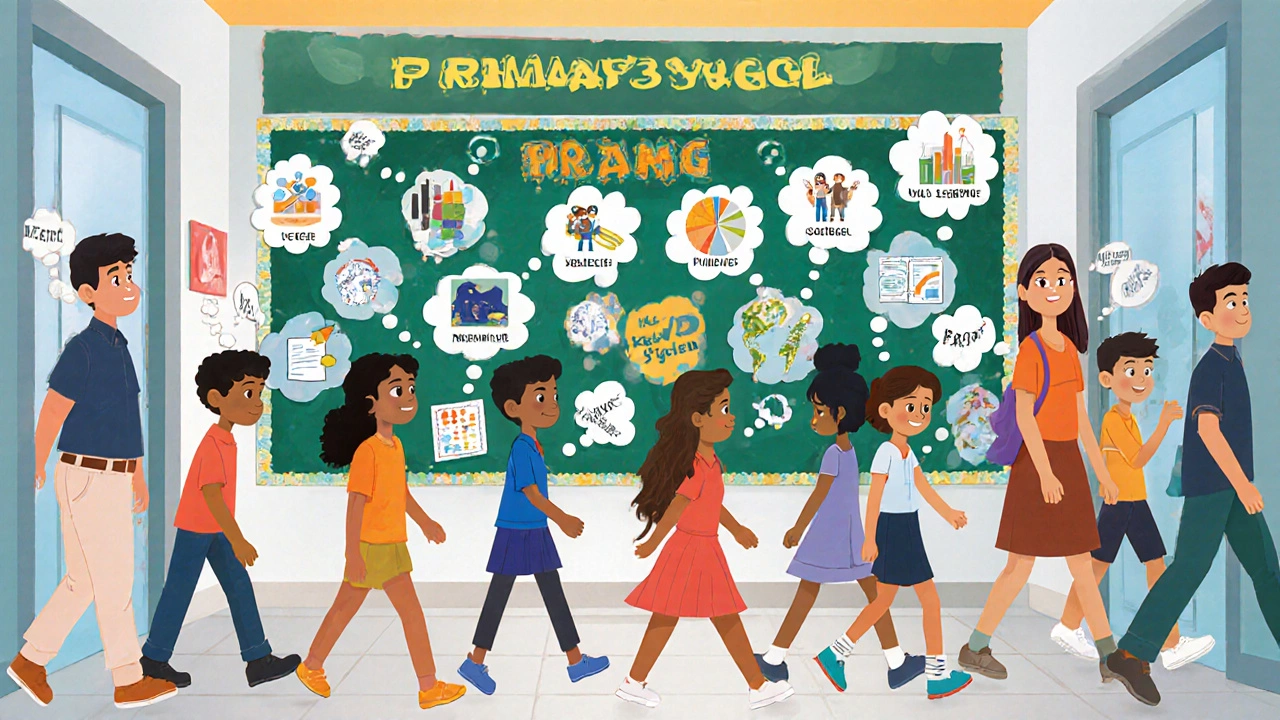26 Sep
2025
Choosing the Best Syllabus for Your Child: A Practical Guide

Syllabus Match Selector
Step 1: Learning Style
Step 2: Future Mobility
Step 3: Assessment Comfort
Step 4: Parental Involvement
Step 5: Family Values
Quick Takeaways
- Identify your child’s learning style, family mobility, and long‑term goals.
- Match those factors against the core focus, assessment style and flexibility of each syllabus.
- Use the comparison table to spot the curriculum that balances structure and creativity for your situation.
- Apply the decision checklist to narrow down the top two options before visiting schools.
- Remember that the “best” syllabus is the one that supports your child’s growth, not the one that sounds most prestigious.
Syllabus is a structured set of learning objectives, content and assessment criteria that guides what a child studies over a school year. Parents often wonder which syllabus will nurture curiosity, uphold standards and fit a family’s lifestyle. The answer isn’t one‑size‑fits‑all; it depends on age range, teaching philosophy, assessment approach and how portable the curriculum is if you move between schools or countries.
What a Syllabus Actually Covers
A syllabus typically defines:
- Age or year group it targets.
- Core subjects and optional electives.
- Learning outcomes - what a child should know or be able to do.
- Teaching methods - inquiry‑based, rote learning, project work, etc.
- Assessment style - exams, portfolios, teacher observations.
Understanding these layers helps you compare options on a like‑for‑like basis.
Major Primary‑Level Syllabi to Consider
Below are the most widely adopted curricula for children aged 3‑11. Each entry includes key attributes that matter to parents.
National Curriculum (England) is a government‑mandated framework used by state and many private schools in England, covering Key Stages 1 and 2. It emphasizes Literacy, Numeracy, Science and a balanced humanities component. Assessment relies on teacher‑marked tests and the national SATs at Years 2 and 6.
International Baccalaureate Primary Years Programme (IBPYP) is a transdisciplinary curriculum that encourages inquiry, concept‑driven learning and global citizenship for ages 3‑12. Assessment is portfolio‑based, with teachers evaluating projects, reflections and exhibition pieces rather than high‑stakes exams.
International Primary Curriculum (IPC) is a theme‑based programme designed for international schools, blending subject knowledge with personal learning goals. It uses a unit‑of‑work structure, with weekly assessments that feed into a final report card.
Montessori Method is a child‑centered approach that promotes self‑directed activity, hands‑on learning and mixed‑age classrooms. Formal assessment is minimal; progress is documented through observational notes and skill‑checklists.
Waldorf Education is a holistic system that weaves arts, storytelling and rhythmic activities into academic study for ages 3‑14. Evaluation relies on narrative reports and teacher‑crafted portfolios rather than grades.
Cambridge International Curriculum is a rigorous, globally recognised programme that offers Checkpoint tests and IGCSE pathways from primary through secondary. It balances subject depth with international comparability, ideal for families who move often.
Curriculum for Excellence (Scotland) is a flexible framework that integrates achievement, wellbeing, citizenship and enterprise for learners aged 3‑18. Assessment uses a mix of teacher‑generated tasks, e‑portfolio entries and national standards.
Side‑by‑Side Comparison
| Curriculum | Age Range | Core Focus | Assessment Style | Flexibility / Mobility | Global Recognition |
|---|---|---|---|---|---|
| National Curriculum (England) | 5‑11 | Literacy, Numeracy, Science, Humanities | Standardised tests (SATs), teacher‑marked work | High within UK, limited abroad | Widely recognised in Britain, moderate internationally |
| IBPYP | 3‑12 | Inquiry, concepts, global mindedness | Portfolio, exhibition, teacher observation | Very high - IB schools worldwide | Highly respected globally |
| IPC | 3‑12 | Thematic, personal learning goals | Unit checklists, progress reports | High - used in many international schools | Good reputation in expatriate circles |
| Montessori | 3‑12 | Self‑directed activity, sensorial learning | Observational notes, skill masters | Moderate - strong networks in private sector | Well known internationally, especially in early years |
| Waldorf | 3‑14 | Arts integration, rhythmic learning | Narrative reports, portfolios | Moderate - niche schools worldwide | Respected in alternative‑education circles |
| Cambridge International | 5‑14 | Subject depth, exam readiness | Checkpoint tests, teacher‑marked work | Very high - global network of schools | Highly regarded by universities worldwide |
| Curriculum for Excellence | 3‑18 | Achievement, wellbeing, enterprise | e‑portfolios, teacher‑generated tasks | High within Scotland, growing abroad | Recognised across the UK, gaining European awareness |

Factors to Match With Your Child
Instead of chasing hype, line up the syllabus traits with what matters for your child’s day‑to‑day life.
- Learning style. Does your child thrive on hands‑on exploration (Montessori, Waldorf) or do they enjoy structured challenges (National Curriculum, Cambridge)?
- Future mobility. If you anticipate moving internationally, a globally recognised programme like IBPYP or Cambridge reduces transition friction.
- Assessment comfort. Some families prefer clear grades and external exams; others feel uneasy about high‑stakes testing and would opt for portfolio‑based assessment.
- Parental involvement. Montessori and Waldorf encourage parents to observe and support at home, while national‑type curricula often rely on school‑led homework.
- Values and ethos. If you value sustainability and community, the Scottish Curriculum for Excellence embeds civic education early on.
Rank each factor on a scale of 1‑5 for your family, then see which syllabus scores highest overall.
Decision Checklist
- Visit at least two schools that offer your top‑ranked curricula.
- Ask teachers how they personalise learning within the framework.
- Request sample assessment reports to gauge feedback style.
- Check any extra fees (e.g., IB training costs, Cambridge exam fees).
- Consider the school’s track record for transitions to secondary education.
Cross‑checking these items with the comparison table usually narrows the field to a single, confident choice.
Real‑World Example
Emily, a 7‑year‑old who moves between Manchester and Dubai every two years, needed a curriculum that didn’t reset her progress each relocation. Her parents evaluated the table and gave high scores to global recognition and flexibility. The IBPYP emerged as the clear winner because its inquiry‑driven units continue seamlessly across continents, and its portfolio assessment travels with the student. After a school visit, Emily’s teachers demonstrated how the exhibition project could be adapted to local culture, confirming the fit.
Key Takeaway
The "best" syllabus is the one that aligns with your child’s learning preferences, family mobility plans and the values you want school to reinforce. Use the comparison table as a factual compass, then let your child’s personality steer the final decision.
Frequently Asked Questions
What age does the National Curriculum start?
The National Curriculum in England typically begins at age 5, covering Key Stage 1 (Years 1‑2) and Key Stage 2 (Years 3‑6). Some responsibilities, like early years foundation stage, precede it but are not part of the formal curriculum.
How does the IBPYP assess a child’s progress?
IBPYP uses a portfolio system where students collect work samples, reflections and teacher observations. At the end of each unit, teachers use rubrics to evaluate concepts, inquiry skills and attitudes. There are no traditional exams before the Middle Years Programme.
Is Montessori suitable for children older than 9?
Yes. Montessori schools often have upper elementary programmes up to age 12, focusing on abstract reasoning, independent research and collaborative projects while retaining the self‑directed ethos of the early years.
Do Cambridge International schools require extra exam fees?
Cambridge Checkpoint tests and later IGCSEs carry registration fees per candidate. The exact cost varies by school and country, but families should budget for these charges in addition to tuition.
Can a child transition from Waldorf to a mainstream secondary school?
Transition is possible, but parents should review the receiving school’s entry requirements. Waldorf students usually have strong artistic and narrative skills, which can be complemented with targeted support in standardized testing before moving to a conventional secondary setting.
Write a comment ( All fields are required )